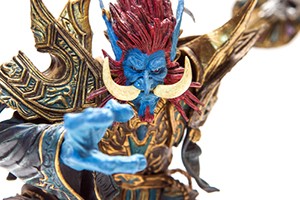
This year’s ComicCon in San Diego is once again buzzing about “World of Warcraft.” This time, it’s not the game that has people talking, but a movie based on the fantasy series. The movie’s trailer is set to premiere at the conference Saturday, July 11, and the film hits theaters next year.
The adventures of the Alliance and the Hordes might not seem like typical research material. However, given the smashing success of the game, Yulia Nevskaya, PhD, assistant professor of marketing at Olin Business School at Washington University in St. Louis; and Paulo Albuquerque, PhD, associate professor of marketing at the international business school INSEAD, found World of Warcraft gamers’ behavior to be the perfect foundation to help identify the type of motivation underlying video-gaming and understanding why it is so popular.
“We were thinking along the lines of extrinsic-intrinsic motivation,” Nevskaya said. “If an individual needs an external reward of some kind to perform an activity, we say she is extrinsically motivated. However, if she does what she does for the sake of that activity alone, she is intrinsically motivated.”
The study looked at gaming sessions of almost 1,000 randomly selected anonymous gamers. The data available to researchers showed when gamers logged in to play a game, when they progressed to the next level in a game, and when they got a “tangible” reward, such as a new sword or a virtual pet. By analyzing the timing of earning rewards against the timing of logging in and out of a game, the authors were able to classify each gamer as being mostly extrinsically or intrinsically motivated.

Researchers found about 20 percent of the gamers were highly motivated by the pure pleasure of exploring and interacting in the fantasy environment of the game — they were intrinsically motivated. The remaining 80 percent were more responsive to in-game extrinsic rewards that they earned during play.
“As such, by strategically managing the size and timing of those extrinsic rewards, a game developer can effectively manage gamers’ motivation to play the game,” Nevskaya said.
As a result of the study, the authors developed a model that can help companies develop optimal rewards schedules to maximize consumer engagement with games and similar types of products.
Nevskaya is available for interviews and can be reached at yulia_nevskaya@wustl.edu.